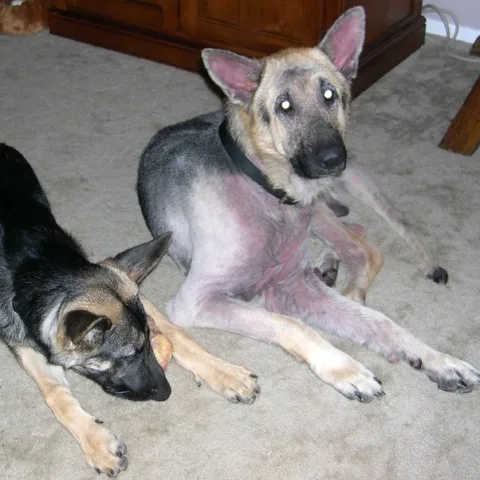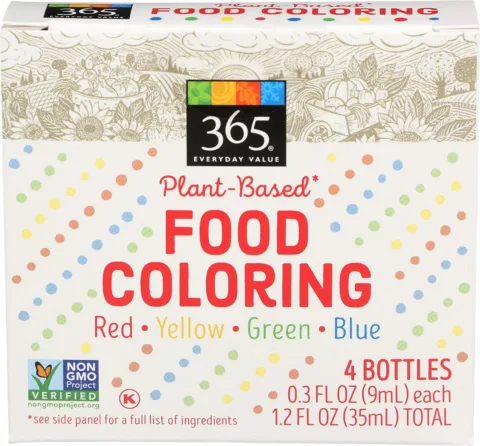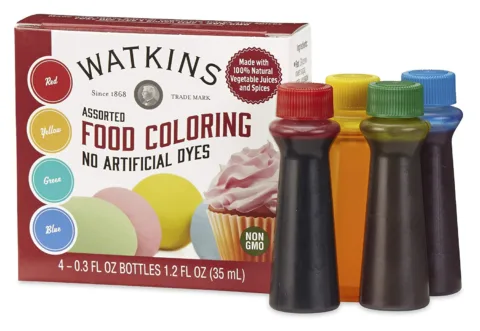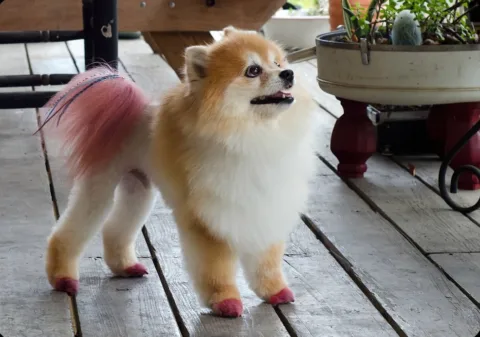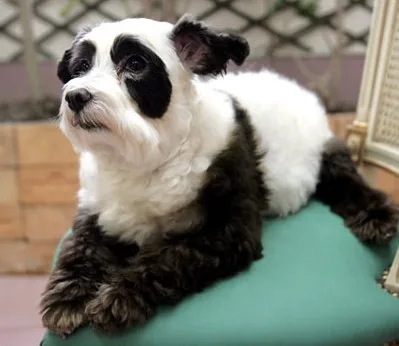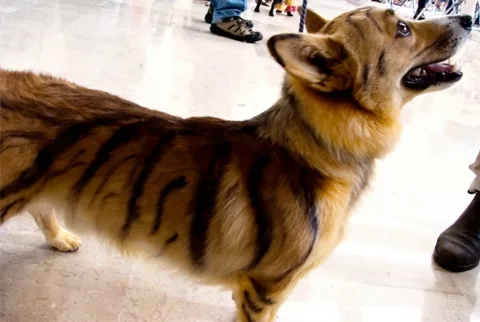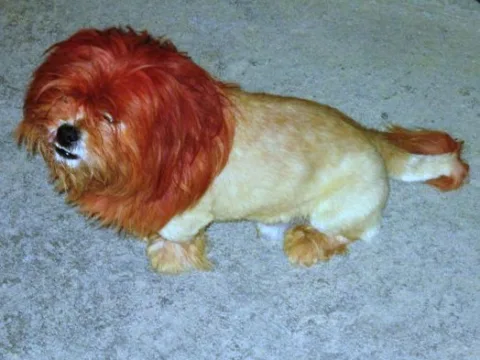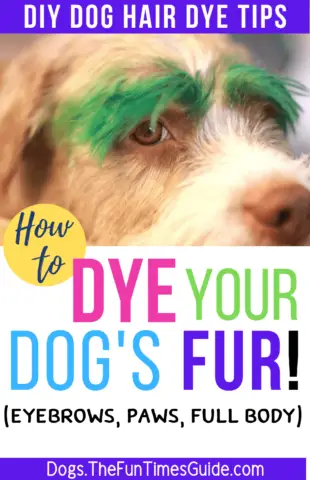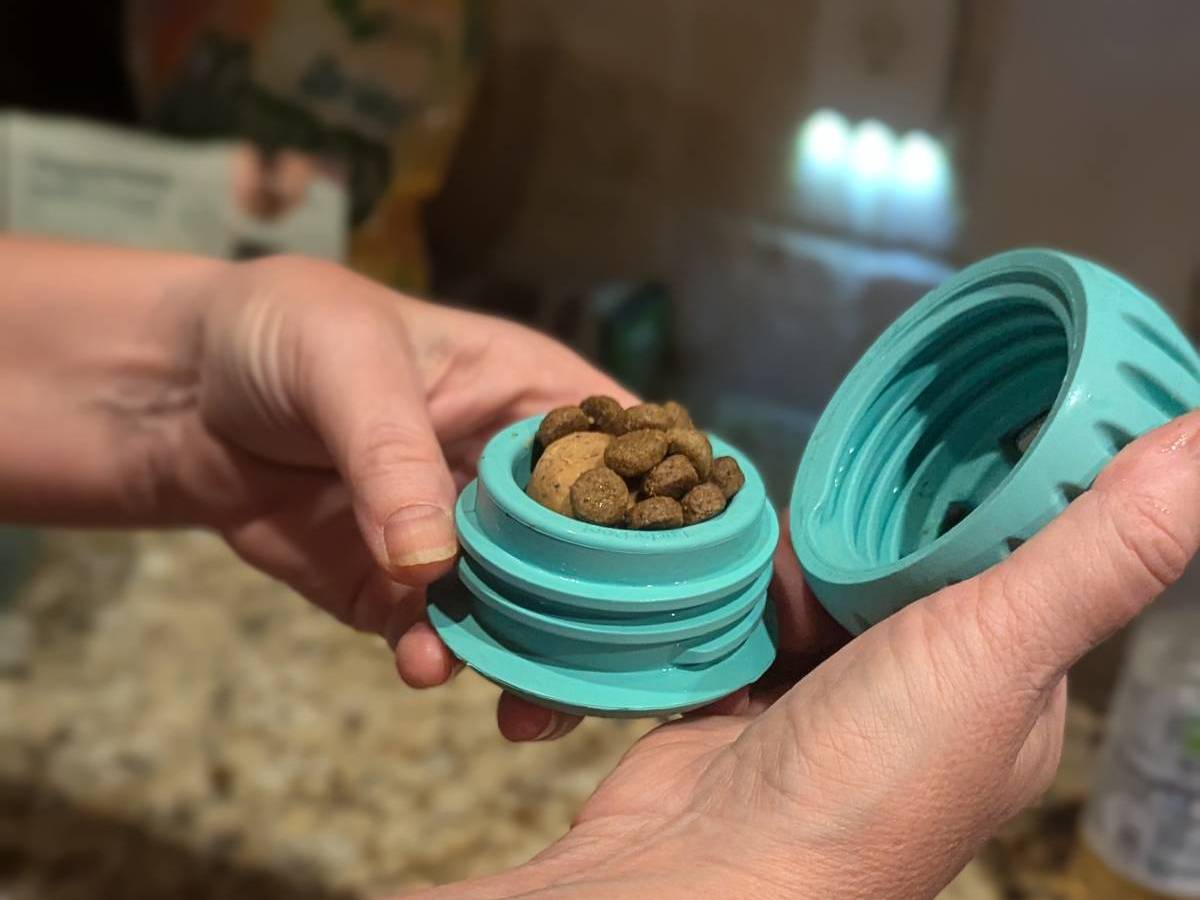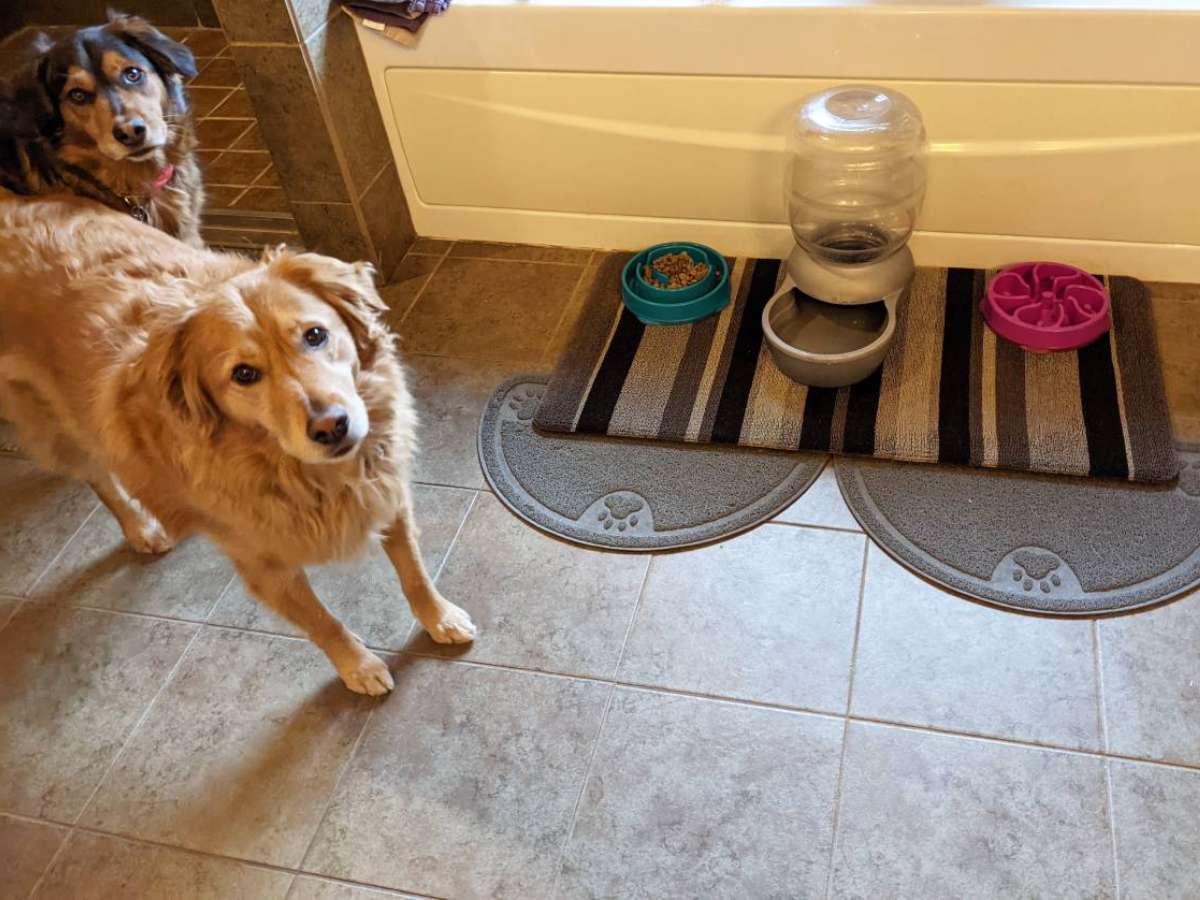Thinking of dying your dog’s fur to make it a different color?
Here are some popular dog fur colors and times of the year to dye your dog’s fur:
- Rainbow dog fur for any occasion
- Pink dog fur for Valentines Day
- Green dog fur for St. Patrick’s Day
- Pastel colored dog fur for Easter
- Bold rainbow colored dog fur for Cinco de Mayo
- Red/white/blue dog fur for an election year or 4th of July
- Tie dye dog fur for Hippie Festivals like Bonnaroo
- Striped dog fur for Halloween
- Fall colored dog fur for Autumn and Thanksgiving
- Red & green dog fur for Christmas
- Years or numbers on dog fur for New Year’s Day
- Colorful circles on dog fur for the Olympics
- Bright pink dog fur for when you’re feeling joyous
…You get the idea!
Following are some helpful tips for dying your dog’s fur — without hurting your dog or making them uncomfortable in the process.
Do NOT Use Regular Hair Dye!
Remember, the pH level of your dog’s skin is very different than a human’s.
That’s why you cannot use regular hair dye to color your dog’s fur.
First and foremost, don’t use products with harmful chemicals in them to dye your dog’s fur! The chemicals (including bleach) will irritate a dog’s skin and you’ll have to undergo a series of vet visits to get your dog’s skin and coat back to normal. Don’t make your dog suffer through this.
The safest option is to use food coloring. This will not harm your dog if they should happen to lick their paws or coat while it’s drying.
5 Ways To Dye A Dog’s Fur With Food Color
#1 – First, try to find real foods that are safe for dogs to eat and that will produce the color you are after. Some examples:
- Asparagus
- Beets (red/pink)
- Blackberries (purple/black)
- Blueberries (blue/purple)
- Carrots (orange)
- Cherries (red)
- Cranberries (red/pink)
- Raspberries (pink)
- Red Cabbage (blue/purple)
- Spinach (green)
- Strawberries (red/pink)
- Sweet Potatoes (orange/tan)
- Turmeric Powder (yellow)
The juice from any of the above should tint your dog’s fur enough to be noticeable. You can use fresh or frozen. You’ll want to squeeze either fresh or thawed varieties and then use a potato masher to get the most juice. Or toss into a blender or food processor.
In South America, the juice of red sweet potatoes is combined with lime juice to make a dye for cloth. By varying the proportions of the juices, every shade from pink to black can be obtained.
~ Source
#2 – If you can’t find any dog-safe foods to create the perfect color, then look for all-natural, plant-based, or organic food coloring — like India Tree natural decorating colors or Whole Foods plant-based food coloring. They are made from highly concentrated vegetable colorants. Best of all, they contain no synthetic dyes and no corn syrup.
Mix the food coloring with fresh water at room temperature. For a small dog you can fill a bath with the colored water, but for a larger dog better put the colored water into a squirt bottle. Saturate the dog’ fur with the colored water -be sure to get all surfaces fully wet. Use a dog comb or brush to work the colored water through the fur and above all be careful not to get the food coloring in his eyes! Put the dog on some old towels or newspapers while you wait for her to dry since the colored water drips off the fur while drying.
~ Source
#3 – Alternatively, you could use regular artificial food coloring. Just be sure to use a little at a time, until you’re clear how dark the resulting color on your dog’s fur will be.
There is some evidence that many commercial artificial food coloring (like red 40 or yellow 6 or blue 2 for example) may have carcinogenic properties if fed long term (such as every single day over the life of a dog). This is one of many reasons that any pet food with artificial coloring added to it is best to avoid. However, the amount of food coloring that would be in your biscuits fed occasionally to a dog is exceedingly unlikely to cause any harm to a dog. If you want to add orange food coloring to the biscuits for a festive flare, go for it. At Christmas time I will make “candy cane” cookies by adding red food coloring to half of the biscuit dough and twisting two rolled pieces of dough together and bending the top. It has never hurt any dog I’ve ever met.
~ Source
#4 – Also, there are only a few dog-safe hair dyes on the market. Be sure to check the ingredients and precautions closely because most of them do contain chemicals that could irritate your dog’s skin — especially if your dog already has allergies or skin issues. So, use with caution.
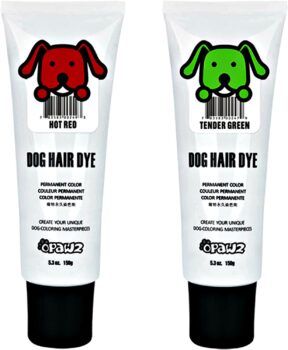
TIP: Combine 2 or more to create a whole new color: Yellow+Red=Orange and Blue+Yellow=Green and Red+Blue=Purple. You’ll find some helpful tips in these 8 ways to make organic food coloring.
#5 – As for using the Kool-aid hair color method on your dog… it’s not highly recommended. Even if you use sugar-free Koolaid, you’ll end up with a sticky mess that will probably make your dog uncomfortable. In addition, the ingredients aren’t good for your dog if they should happen to lick their skin or fur. And the ingredients in Kool-aid are not good for your dog’s skin either.
Apply the dye in one of two ways: (1) Mix the dye in a sink or tub full of water and submerge your dog in the colored water. This will provide a faint color effect. (2) For a more drastic dye job, sit your pup in the sink or tub (depending on its size) and apply the dye with a brush. If you’re using drink mix, combine the powder with water to create a paste. Then apply the paste to small patches of fur until your dog is covered in color.
~ Source
8 DIY Dog Hair Dye Tips
- For the best outcome, start with a clean dog that has been bathed and brushed.
- Light-colored dog fur works best for coloring. The darker your dog’s fur is, the harder it is to find a color that will tint it.
- If your dog is unhealthy in any way, do not dye your dog’s hair!
- Be careful so that you don’t get any of the dye in your dog’s eyes — even natural food coloring. (Dog goggles work best!)
- It’s best to dye your dog outdoors where nothing could become damaged (or spotted) when your dog shakes their fur.
- Be sure to wear thick rubber gloves so your hands won’t become stained.
- If you use a towel to pat dry your dog, keep in mind that towel will become permanently stained.
- Depending on how dark you tint your dog’s fur, it usually takes 4 to 6 weeks to completely wash out.
The best way to apply the tint is to use a spray bottle. Mix the dyes with water and spray it all over the dog. Don’t assume that the color in the bottle is the color you will end up with on your dog. For instance, a white poodle will be much easier to dye than a black terrier. The color in the bottle will likely be accurate for the light-colored dog but will need to be much darker when you’re tinting a dark-haired animal.
~ Source
How To Remove Food Coloring Stains
If you get food coloring on you (or somewhere else it doesn’t belong), you can either use baking soda or acetone nail polish remover.
Here’s how:
#1 – Use some baking soda and a loofah, combined with a small amount of water to make a paste on your hands. Then “scrub” away the food coloring, and rinse well. To remove food coloring from your fingernails, use toothpaste and a toothbrush — it will pull the color right out. (TIP: You can also use toothpaste on your elbows, heels, or any “rough spots” that get food coloring on them.)
#2 – Use acetone polish remover poured onto a cotton ball to “dab away” any food coloring stains. (TIP: Don’t scrub — that will burn your skin. Dabbing draws out the stain without hurting your skin.)
TIP: If you don’t have either baking soda or acetone nail polish remover on hand, you can try something like a facial astringent or witch hazel — but acetone actually works the best, in my opinion.
Pictures Of Dog Fur Colors… For Inspiration!
Enjoy the following links to photos of DIY dog hair dye experiments — some went wrong, and some are oh so right!
- Pastel polka dots on a dog’s fur
- Colorful clown dog
- Dye just the white parts of the dog’s fur
- Green, blue & pink dogs in a basket
- Pastel colored dog
- Red & white poodle
- Stencils (or cookie cutters) make colored shapes on dog fur
- Blue fringe on a white dog
- White dog dyed brown
Dogs Dyed To Look Like Other Animals
Have you seen the dog that was dyed to look like a Panda?
Here’s the story behind the “real” Panda dog.
And here’s a creatively dyed Tiger dog:
More photos of tiger dogs and panda dogs.
This dog is a great example of a dog dyed to look like a lion:
On a related note, this giraffe dog fur dye job looks professional!
Like this post? Save it to read again later… or share with others on Pinterest!


